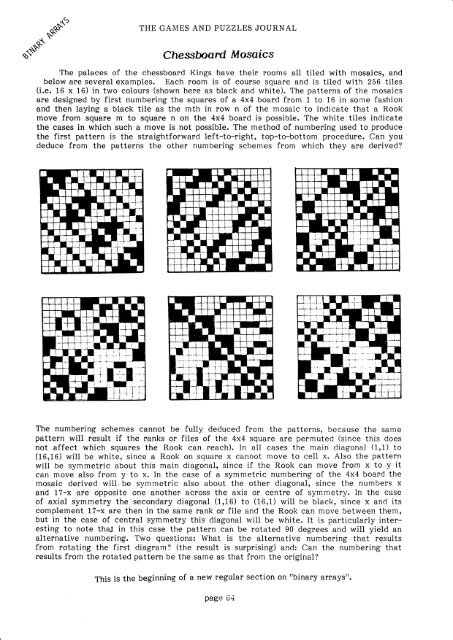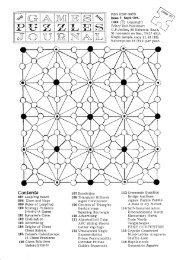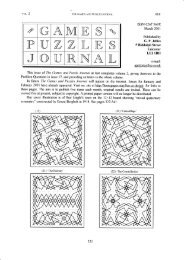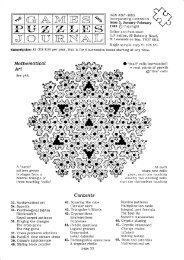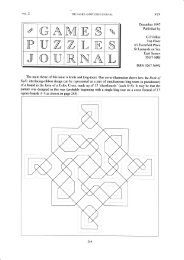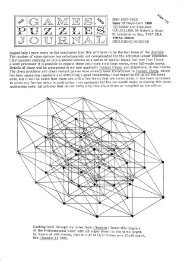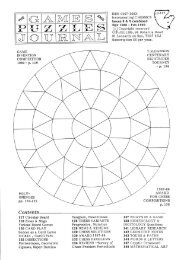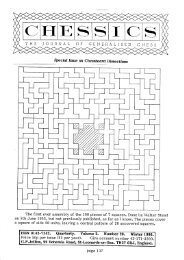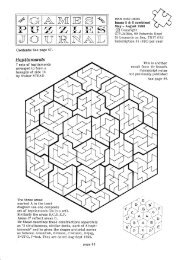The Games and Puzzles Journal, #4 - Mayhematics
The Games and Puzzles Journal, #4 - Mayhematics
The Games and Puzzles Journal, #4 - Mayhematics
Create successful ePaper yourself
Turn your PDF publications into a flip-book with our unique Google optimized e-Paper software.
sd<br />
THE GAMES AND PUZZLES JOURNAL<br />
Ches.sboanC Moscttcs<br />
<strong>The</strong> palaces of the chessboard Kings have their rooms all tiled with mosaics, <strong>and</strong><br />
below are several examples. Each room is of course square <strong>and</strong> is tiled with 256 tiles<br />
(i.e. 16 x 16) in two colours (shown here as black <strong>and</strong> white). tne patterns of the mosaies<br />
are designed by first numbering the squares of a 4x4 board from 1to 1,6 in some fashion<br />
<strong>and</strong> then laying a black tile as the mth in row n of the mosaic to indicate that a Rook<br />
move from square m to square n on the 4x4 board is possible. <strong>The</strong> white tiles indicate<br />
the cases in which such a move is not possible. <strong>The</strong> method of numbering used to produce<br />
the first pattern is the straightforward left-to-right, top-to-bottom procedure. Can you<br />
deduce from the patterns the other numbering schemes from which they are derived<br />
<strong>The</strong> numbering schemes cannot be fully deduced from the patterns, because the same<br />
pattern will result if the ranks or files of the 4x4 square are permuted (since this does<br />
not affect which squares the Rook can reach). In all cases the main diagonal (1,1) to<br />
(16,16) will be white, since a Rook on square x cannot move to celi x. Also the pattern<br />
will be symmetric about this main diagonal, since if the Rook can move from x to y it<br />
can move also from y to x. In the case of a symmetric numbering of the 4x4 board the<br />
mosaic derived will. be symmetric also about the other diagonal, since the numbers x<br />
<strong>and</strong> 17-x are opposite one another across the axis or centre of symmetry. In the case<br />
of axial symmetry the secondary diagonal (1,16) to (1.6,1) will be black, since x <strong>and</strong> its<br />
complement 17-x are then in the same rank or file <strong>and</strong> the Rook can move between them,<br />
but in the case of central symmetry this diagonal will be white. It is particularly interesting<br />
to note tha! in this case the pattern can be rotated g0 degrees <strong>and</strong> will yield an<br />
alternative numbering. Two questions: What is the alternative numbering that results<br />
from rotating the first diagram (the result is surprising) <strong>and</strong>: Can the numbering that<br />
results from the rotated pattern be the same as that from the original<br />
This is the beginning of a new regular section on "binary arrays"<br />
page 04


